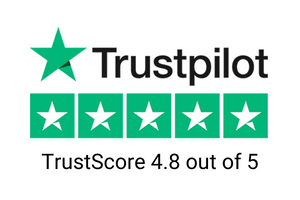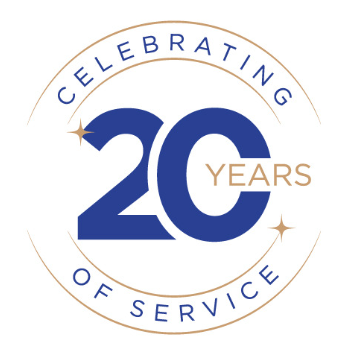Last Updated: November 02, 2023
The Ins and Outs of Credit Card Limits

Disclaimer: We are not qualified legal or tax professionals and are not giving advice. Always speak with a qualified professional before making any legal or financial decisions.
When you apply for revolving debt like a credit card, you are given a credit limit. A credit limit is the total amount of money you can charge on your credit card. Your credit limit minus the revolving charges equal your available credit - the amount you can still use.
How you are assigned a credit limit is not a secret, it is based on your financial history. In addition, your credit limit can be changed by the credit card issuer based on your spending history or by asking the credit card company to increase your credit limit.
In addition, credit limits are very important numbers that can affect your credit history and debt level. In order to understand your credit history, let’s take a look at credit limits.
Secured and Unsecured Credit Cards
There are two types of credit cards, secured and unsecured. Both types of cards have credit limits. The difference is that a secured credit card has a savings account with a specific amount of money in it. That money, deposited by you, is your credit limit. You can spend up to that amount and if you fail to make payments, the credit card company uses that money to pay your card.
Your credit limit is then lowered by that amount. Because the card is secured, interest rates are generally lower than an unsecured credit card. Secured credit cards are great for people who are building or rebuilding their credit history or who have issues with controlling their credit card use.
An unsecured credit card means that the credit card issuer is taking a chance that you will repay the charges, which are subject to
the statute of limitations for credit card debt. Interest rates are generally higher, with the current average interest rates over 16%. The remainder of this article will deal with unsecured credit cards and credit limits.
Determining Your Credit Limit
While some unsecured cards have predetermined credit limits, others have ranges determined by your financial habits. When you apply for a credit card, the issuer looks at your credit score and history, income, debt to income ratio, and the limits on other credit cards. The issuer determines how much you can afford to repay. This becomes your credit limit.
To find your credit limit, either look at your statement or call the number on the back of the card.
Credit Score and History
The better your credit score, the better risk you are. It means that you are handling your finances responsibly. Credit reporting companies look at five factors: payment history, credit utilization ratio, age of credit, credit mix. and recent applications.
For an in-depth look at these five factors, check out our
article. The first two are the most important, representing more than 65% of your score.
The credit utilization ratio is how much of your credit amounts you are using. For instance, if you have $5,000 in credit limits and use $2,000 of that, your credit utilization is 40%.
Credit reporting companies want to see a credit utilization ratio of less than 30%. This means that you should only be using $1500 of your credit limit. Paying down existing revolving bills (such as credit cards) will improve your credit score.
Income
As far as your income goes, it’s pretty straightforward. The more you make, the higher your credit limit.
Debt to Income Ratio
The debt to income ratio looks at how much debt you have compared to your income. To calculate your DTI:
- Add up all your monthly debt payments (mortgage, car payments, credit cards, etc)
- Divide by your gross monthly income (before taxes)
- Multiply the number by 100
For instance, you have $2,000 in monthly debt payments and your gross monthly income is $5,000 a month, your DTI is 40%. Lenders like to see a DTI of 43% or less.
The more debt you have compared to your income the more risk you are to the credit card company.
If you have a higher DTI, focus on paying down your revolving loans. Not only will it improve your credit score but you will be in a better financial position.
Limits on Other Credit Cards
Credit issuers look at how many cards you have and how many of those credit limits you are using. Taking on new credit cards often means you are expecting some negative financial changes, especially if you have maxed out your other cards.
Applying for credit cards can temporarily lower your credit score, so avoid applying for credit cards just because they are offered.
Changing Credit Limits
Credit card companies can decrease or increase your credit limits based on your spending and repayment habits.
Decreased credit limits mean that you’ve taken on more debt, missed payments, did not use the card, have an issue with your credit report, or your identity is compromised. If your credit limit is decreased, check why.
If it is an error on your credit report, you can correct that and restore your credit limit. Check out this
article on how to check your credit score. Otherwise, improve your repayment habits.
Increased credit limits mean that you are handling your existing credit well, you pay bills on time, your credit score has increased, your income has gone up, or you have asked for a credit limit increase.
If you do get a credit limit increase, do not run out and charge more. That will damage your credit score by increasing your credit utilization ratio.
Requesting a Credit Limit Increase
If you have a good payment history and want a higher credit limit, you can request an increase directly from your credit card company. Contact customer service and ask what they require for a credit limit increase. Often, you'll need to provide information like your income, expenses, and reason for requesting a higher limit.
The advantage of a higher credit limit is it can help improve your credit utilization ratio. The disadvantage is the temptation to overspend. Only request an increase if you can responsibly manage the higher limit.
Alternatives if Denied a Limit Increase
If your credit card company denies your request for a higher limit.
Consider these options:
- Apply for a different card with a higher limit from another issuer. Be cautious of too many credit inquiries.
- Make an extra payment mid-cycle to free up available credit.
- Pay down balances on other cards to lower your overall utilization.
- Build your credit history with responsible use over time.
Understanding Credit Limit Decreases
Your credit card company can also decrease your limit based on factors like:
- Missed or late payments
- High balances and credit utilization
- Significant changes to your credit report
- Inactivity on the card
A lower credit limit can negatively impact your credit score. If possible, take steps like paying down balances before the decrease happens.
Exceeding Your Credit Limit
When you sign up for a credit card, you will be asked if you want to opt-in to exceed your credit limit. If you agree, you can exceed your credit limit and you will be charged over-limit fees.
If you do not opt-in, your credit card will be declined if your purchase goes over your credit limit. If you opted-in by mistake, have it removed from your credit card by contacting the issuer.
Managing Your Credit Limit
While having access to a high credit limit can be beneficial, it's important to actively manage your limit and not rely on it too heavily.
Here are some tips:
- Set a personal spending cap well below your credit limit to avoid the temptation to overspend. For example, only use half of your total limit.
- Make payments frequently so your balance stays low compared to the limit. Don't wait until the due date if you can pay early.
- Notify your card issuer if you will be making a large purchase that is close to your limit. They may be able to temporarily raise it.
- Monitor your balance and available credit regularly. Sign up for alerts about credit usage.
- Have a plan to pay off large purchases that minimize interest charges. Consider 0% APR deals.
Other Ways to Increase Your Credit
Asking for a higher credit limit is one way to raise your total available credit and help your utilization ratio.
But there are other options too:
- Apply for new credit cards only as needed to increase your overall limits. Too many applications can hurt your credit.
- Ask to transfer limits between existing cards. For example, take some of the limit from one card you rarely use and add it to your primary card.
- Before closing unused cards, consider moving their limits to other accounts first. Closing the account entirely may decrease your total credit.
- If possible, make additional payments before your statement period ends to lower your balance faster.
FAQs
Conclusion
Credit limits are an integral part of credit cards and understanding how they are determined and how to increase them are important. As you use your credit card, be aware that you are borrowing the money and will need to repay it with interest and fees.
Not using your entire credit limit and paying down any revolving debt is very important. Otherwise, credit cards can put your financial health at risk.
Contact us today for a
free debt relief consultation.
*Disclaimer: Pacific Debt Relief explicitly states that it is not a credit repair organization, and its program does not aim to improve individuals' credit scores. The information provided here is intended solely for educational purposes, aiding consumers in making informed decisions regarding credit and debt matters. The content herein does not constitute legal or financial advice. Pacific Debt Relief strongly advises individuals to seek the counsel of qualified professionals before undertaking any legal or financial actions.
✔ Accredited by Better Business Bureau with BBB A+ rating (4.93 rating and 1678 reviews)
✔ US News and World Reports and Bankrate ranked Pacific Debt Relief as one of “The Best Debt Relief Companies of 2024”
✔ 6.9 star rating by BestCompany.com (over 2379 client reviews)
✔ 4.8 star rating by TrustPilot based (over 1613 verified consumer reviews)
✔ ConsumerAffairs.com Accredited (over 544 verified reviews with an average rating of 5 stars)
✔ A Top 10 Rated Compan by TopTenReviews.com , ConsumersAdvocate.com and Top10debtconsolidation.com
✔ 4.6 star rating by Google (229 client reviews)
✔ 100% rating by SuperMoney (9 client reviews)
Reduce Your Credit Card Debt By Up to Half

BBB Reviews | 4.9/5.0 Rating









 Do Not Sell My Personal Information
Do Not Sell My Personal Information